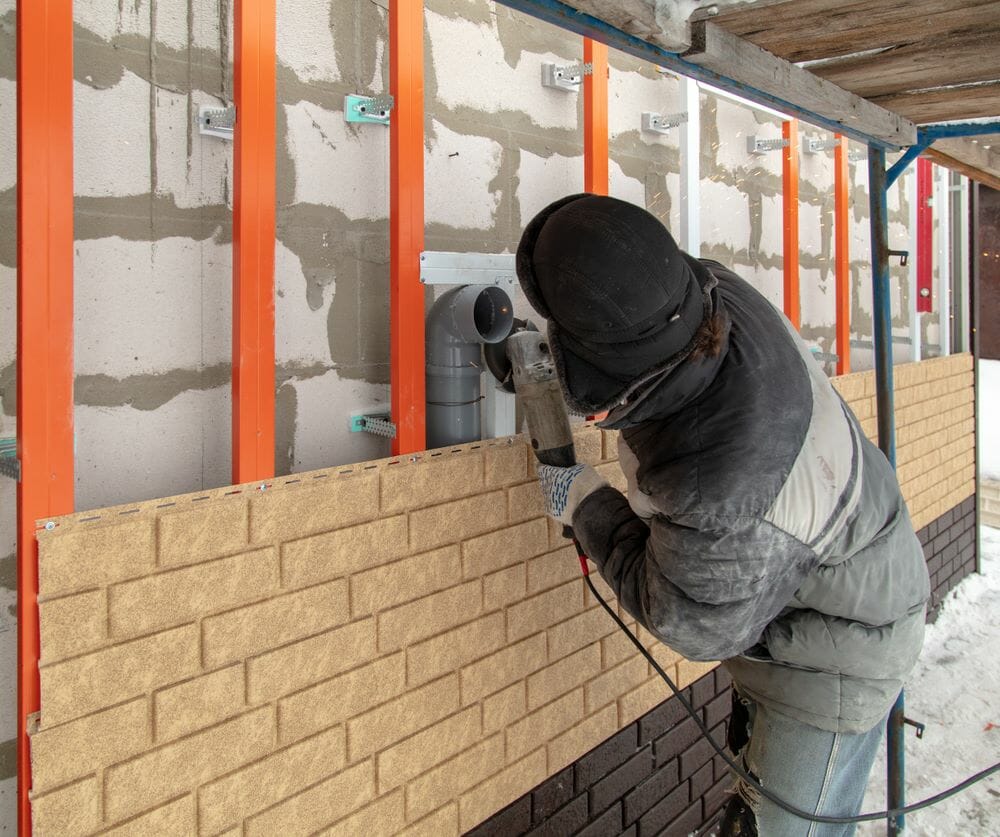Step by Step Installation of Vinyl Siding
Vinyl siding installation is becoming increasingly popular among homeowners, thanks to its unmatched super qualities. To avoid spending too much on hiring a professional contractor, you can follow these DIY steps to achieve low-cost, high-quality vinyl siding for your house.

Materials and tools
A standard siding installation system comprises 12-ft. vinyl siding lengths, J-channel, corner moldings, window/door trim channel, utility channel, metal starter strips, fascia covers, and vented and unvented soffits. There are different styles and colors for vinyl siding, but this step-by-step guide will basically look at the installation of the Dutch lap style due to its uniqueness. Vinyl siding cutting can be done using tin snips, a circular saw with a plywood blade or a knife for scoring and breaking the vinyl siding. If you have some problems with your siding, give Ideal Siding company a call.
Step 1: Soffit and Fascia
Nail lengths of J-channel against the fascia board’s inner edge to hide the soffit lengths’ cut edges. Ensure the nailing is loosely done, and you should give room for the change in direction at the corners of the soffit wraps around a corner. In most cases, the soffit pieces are 12-ft. long, so you need to cut them to suit your needs and fit the span. After completing the installation of the soffit, remove the gutter and put predetermined lengths of the fascia under it. Nail the upper part of the gutter, placing the nails a few feet apart. Join the fascia pieces and then replace the gutter. You can hire the services of a professional if you need more custom-made aluminum components for intricate designs and decorative trim.
Step 2: Siding the Walls
The first step in siding installation is removing loose obstacles and then measuring the distance between the bottom of the existing siding and the eave. Mark the best position for the metal starter strip and nail rigid foam sheathing string on either side of the corners. Nail the door and window trim around exterior doors and add a sheath for insulation on the walls. Hook the bottom lip of the siding below the starter strip and centrally place the nails in the slots to allow for expansion.
Step 3: Handling Obstructions
Dealing with obstructions is critical when installing vinyl siding. If you have a deck, install the first row of siding on both sides. Use plywood for the best support, though you can also use rigid-foam backing for support. To install vinyl siding below a faucet, remove the faucet from the wall by loosening the mounting screws. Slide the siding below the faucet after notching it from the top. You can use an insulation backing board when dealing with any external conduit, and where the J-channel meets the pipe, caulk it. Find a way to work around permanent utility structures and equipment, if any.
Step 4: Window and Door Trim
Do away with any caulk that could interfere with the new trim’s flatness. You will need to cut the trim channel in line with the sill’s length and then nail it. Cut the top channel an extra 2 inches longer than the width of the door or window, then use the excess portion to drip the edges. Install the siding one row below the window’s bottom, with insulation backing already in place.
Now slide your vinyl siding into the right position from below and nail it in place. In the same manner, install siding at the top of the door or window while setting the siding on the window channel and marking the cut using the window trim.
Step 5: Meet the Soffit
When the siding installation’s completion is a foot away, nail lengths of the trim to the wall under the soffit. You can then nail the second-last row and get the width of the last piece. Using 3d painted nails that are in the same color as your siding, safely fasten the last piece in place. This method of installation is effective but does not allow for free expansion. You should, therefore, ensure adequate spacing of the nails. Connect the top and bottom of the siding by pushing it into the utility channel until it clicks.
If you are living in Edmonton, call us to get siding services in Edmonton.